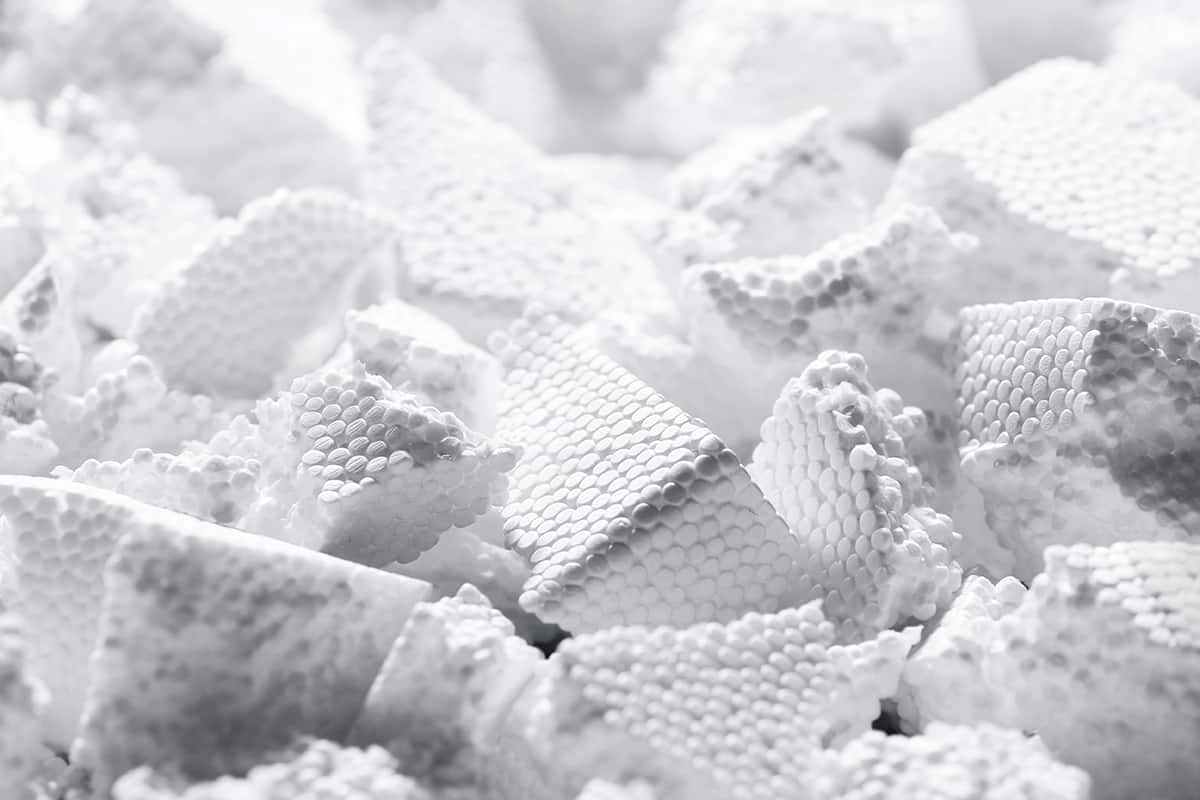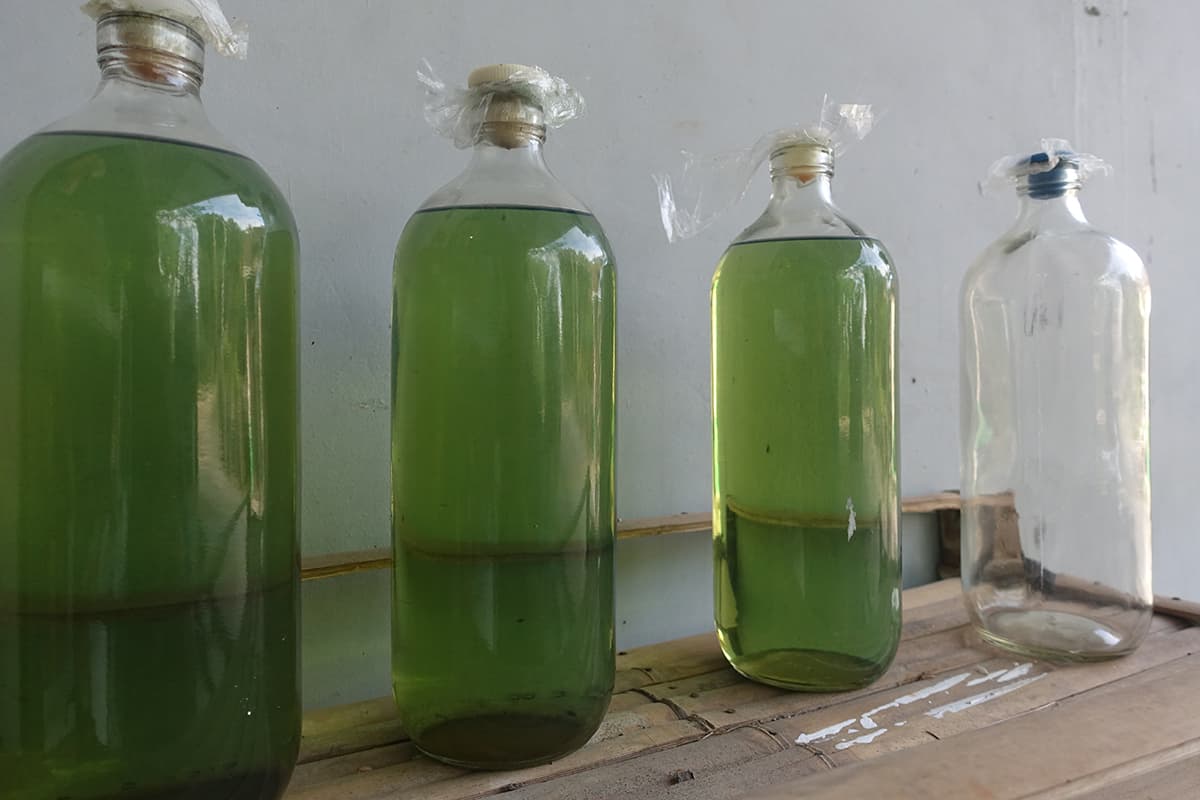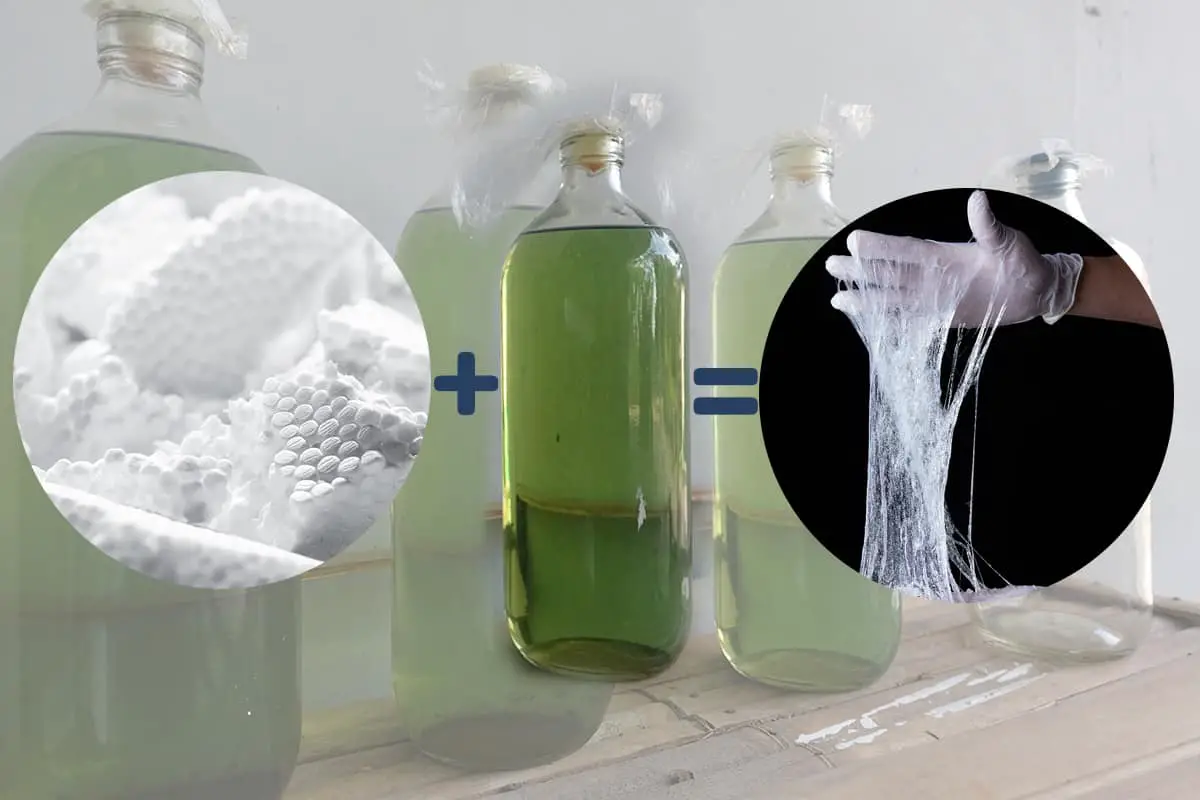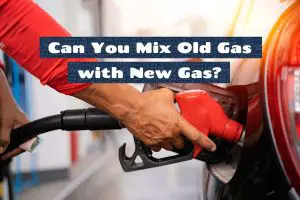Styrofoam and gasoline are two substances that don’t usually go hand in hand, but mixing the two is something people have done in the past. Some have argued that it creates a sealant that can be used to patch roofs or to plug leaks in vehicles, while others have poured gas on Styrofoam to dissolve it.
Mixing Styrofoam and gasoline creates a plasticky, pliable goo that could theoretically be used as a sealant. However, the flammability of the mixture makes it an inappropriate alternative to commercial sealants, so you should avoid using it at all times.
Today, we will look at Styrofoam and gasoline independently and explain what happens when you combine them. Spoiler alert—nothing good can come of it!
What Is Styrofoam?

Styrofoam, a brand name often used to describe all types of expanded polystyrene foam (EPS), is a lightweight material predominantly used for insulation and crafting purposes. Known for its distinctive blue color, the Dow Chemical Company originally trademarked Styrofoam.
Styrofoam is created from polystyrene, a petroleum-based plastic. The polystyrene is heated, expanded, and then cooled to form a solid structure. This structure consists of 98% air, which gives Styrofoam its light weight and excellent insulation properties.
EPS is highly resistant to heat transfer, making it ideal for use in building insulation, disposable coffee cups, and protective packaging for delicate items. However, its porous nature can absorb liquids, potentially compromising its insulating capabilities when exposed to moisture for extended periods.
Contrary to popular belief, Styrofoam isn’t biodegradable. It takes hundreds of years to break down, contributing significantly to environmental pollution. This fact has led to increased interest in finding creative ways to reuse and repurpose Styrofoam, such as using it in combination with gasoline to create sealants.
What Is Gasoline?

Gasoline, also known as petrol in some parts of the world, is a transparent, petroleum-derived liquid primarily used as fuel in internal combustion engines, such as those found in cars, motorcycles, and small trucks. It’s an essential component in modern transportation, powering vehicles to move people and goods from one location to another.
Gasoline comes from crude oil, a naturally occurring fossil fuel. Crude oil contains various types of hydrocarbons, molecules consisting of hydrogen and carbon. These hydrocarbons, in their raw form, aren’t very useful. The refining process is what transforms crude oil into usable products like gasoline, diesel, jet fuel, and more.
One critical additive is an octane booster. The octane rating of gasoline is a measure of its resistance to knocking or pinging during combustion. Knocking can cause damage to the engine, so higher-octane fuels are used in high-performance or turbocharged engines to prevent this.
What Happens When You Mix Styrofoam and Gasoline?
Styrofoam is composed mainly of air and polystyrene. Polystyrene is a polymer, meaning it’s made up of a long chain of repeating units, called monomers. In the case of polystyrene, the monomer is styrene, a liquid hydrocarbon.
Gasoline, a mixture of various hydrocarbons, acts as a solvent on the polystyrene component of Styrofoam. The polystyrene molecules, which usually exist in a rigid formation that gives Styrofoam its solid structure, break apart when exposed to gasoline.
This breakdown of polystyrene’s structure is similar to what happens when you add salt or sugar to water. The solvent (in this case, gasoline) disturbs the forces holding the solid structure together, allowing the individual units to spread out and move freely in the solvent.
The result of this dissolution process is a gooey, sticky substance that resembles a thick paint or a runny glue. This is because as the polystyrene dissolves, it releases the air that was trapped in the foam, leading to a dramatic reduction in volume and a change in consistency. The mixture maintains its sticky nature because the dissolved polystyrene still has a high molecular weight, leading to high viscosity.
The ratio of Styrofoam to gasoline can affect the properties of the final product. If you use a lot of Styrofoam, you’ll end up with a thicker and stickier substance, while using less Styrofoam will result in a thinner mixture. The substance’s viscosity also depends on the particular grade of gasoline and type of Styrofoam used.
The resulting mixture of Styrofoam and gasoline is highly flammable due to the volatile components in gasoline. This makes it a dangerous substance if not handled correctly. It can catch fire easily and burns with a lot of heat and smoke, making it difficult to extinguish once ignited.
Environmental Impact of the Styrofoam-Gasoline Mixture
When Styrofoam and gasoline merge, they form a gooey, sticky substance. This mixture amplifies the environmental challenges of its individual components. If improperly disposed of, this mixture can contaminate soil and groundwater with a persistent, toxic sludge.
The mixture’s persistence in the environment is concerning. Since Styrofoam doesn’t break down naturally, any gasoline-Styrofoam blend will likewise linger for centuries. The harm to flora and fauna can be extensive. Terrestrial and aquatic creatures might ingest the substance, leading to poisoning or suffocation.
Moreover, if the mixture is burnt, it releases noxious fumes into the atmosphere. In addition to carbon dioxide, incomplete combustion can create carbon monoxide, a lethal gas, and various harmful hydrocarbons. Besides contributing to air pollution and global warming, these emissions can have severe health implications, including respiratory ailments and cardiovascular problems.
What Can You Do with the Resulting Goo?

While mixing Styrofoam and gasoline isn’t something most people would think of doing, it’s worth knowing what can result from such an experiment.
Makeshift Sealant
Interestingly, some people use the resulting Styrofoam-gasoline mixture as a makeshift adhesive or sealant. This use is due to its sticky consistency, its ability to harden after a period of time, and its resistance to water and other common solvents once dried.
However, due to its flammable nature, such usage carries inherent risks and is generally not recommended for most applications, especially near sources of heat or flame.
Alternative for Styrofoam Disposal
Others have argued that mixing gasoline with Styrofoam is a “safe” way to reduce Styrofoam wastage. After all, it takes hundreds of years to break down naturally, so accelerating the process by mixing it with gasoline and compacting it into a gooey or hardened mess is the better alternative, right? Not necessarily.
There are much better and environmentally friendlier methods of Styrofoam disposal. The first is taking the used Styrofoam to a recycling plant that accepts the material. Ensure you’ve removed all stickers and other objects from the Styrofoam before unloading it on the recycling plant.
You can also try to give old Styrofoam a new life by figuring out ways to reuse the old material. This includes turning it into pot fillers, creating a seedling starter for your backyard garden, or turning it into makeshift insulation.
FAQs
1. Why does Styrofoam dissolve in gasoline?
When Styrofoam comes in contact with gasoline, the gasoline breaks the interactions between the polystyrene molecules, causing the solid structure of Styrofoam to dissolve. This dissolution results in a dramatic decrease in volume as the air trapped in the foam is released and a sticky, goo-like substance is left behind.
2. What is the environmental impact of a Styrofoam-gasoline mixture?
Both Styrofoam and gasoline carry considerable environmental concerns. Styrofoam is non-biodegradable and can persist in the environment for hundreds of years. Gasoline, when burned, releases carbon dioxide, a greenhouse gas that contributes to climate change and other harmful pollutants.
A mixture of Styrofoam and gasoline combines these environmental concerns. When this substance is disposed of improperly, it can contaminate soil and waterways, posing risks to wildlife and ecosystems. Moreover, if it is burned, it releases harmful fumes, contributing to air pollution and posing health risks.
3. Does mixing Styrofoam and gasoline create napalm?
The mixture of Styrofoam and gasoline can sometimes be incorrectly referred to as homemade napalm. The term ‘napalm’ refers to a specific type of incendiary substance used in combat, which originally combined naphthenic and palmitic acids.
While the Styrofoam-gasoline mixture and napalm may share some superficial similarities, such as a thick, sticky consistency and flammability, they are not the same thing. The formulation of genuine napalm is far more complex and dangerous. The homemade mixture lacks the consistency, heat generation, and burning duration of real napalm.
4. Can the Styrofoam and gasoline mixture be used for any practical applications?
While it has been used as a makeshift adhesive, sealant, or even as a fire starter in emergency survival situations, these uses are discouraged due to the mixture’s environmental impact and potential safety hazards. Using this mixture in a practical, everyday setting is highly inadvisable because of its dangerous nature and harmful effects.
5. Is it legal to make a Styrofoam and gasoline mixture at home?
Legality can depend on the specific region or country you reside in. In many places, creating a Styrofoam and gasoline mixture at home could be considered a danger, especially if it’s used for destructive purposes or disposed of irresponsibly. Also, the creation of such a mixture could violate various environmental and public safety regulations.






